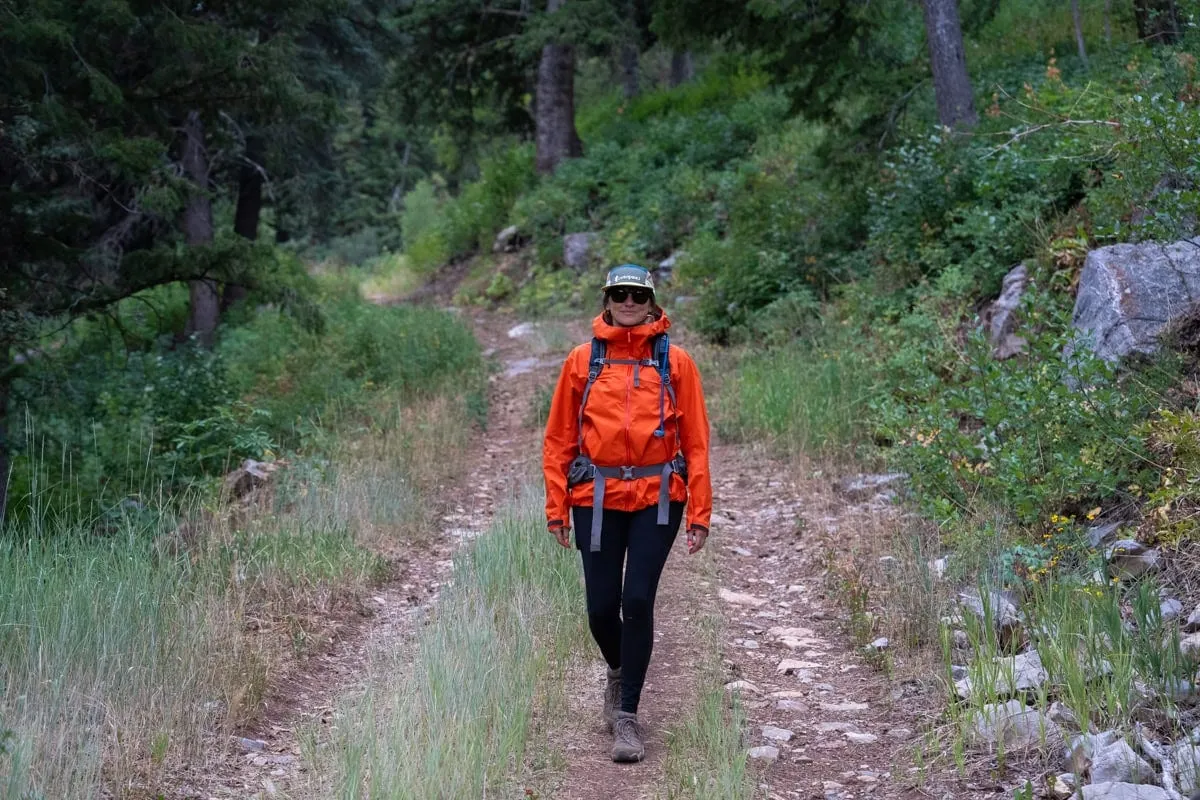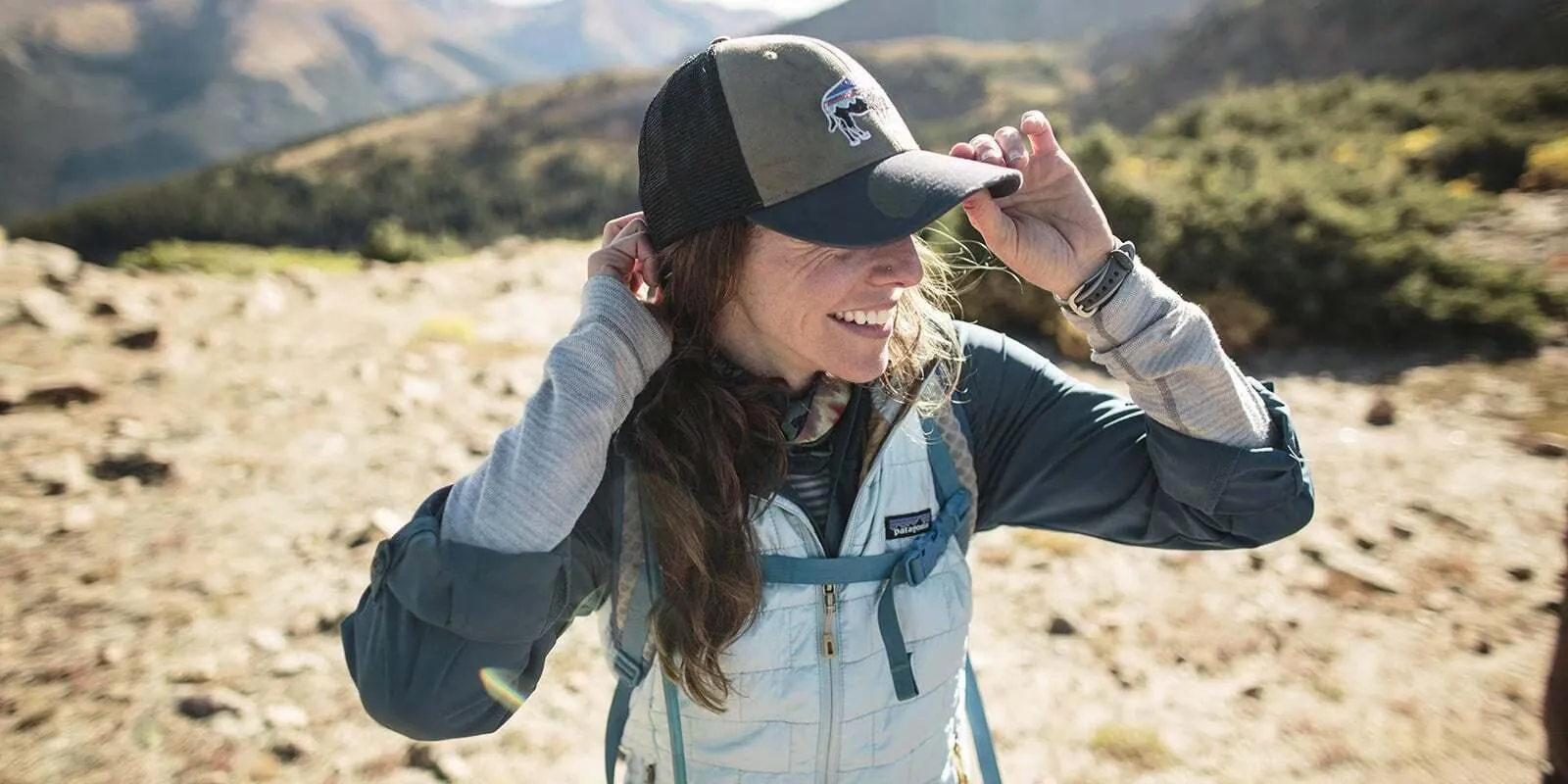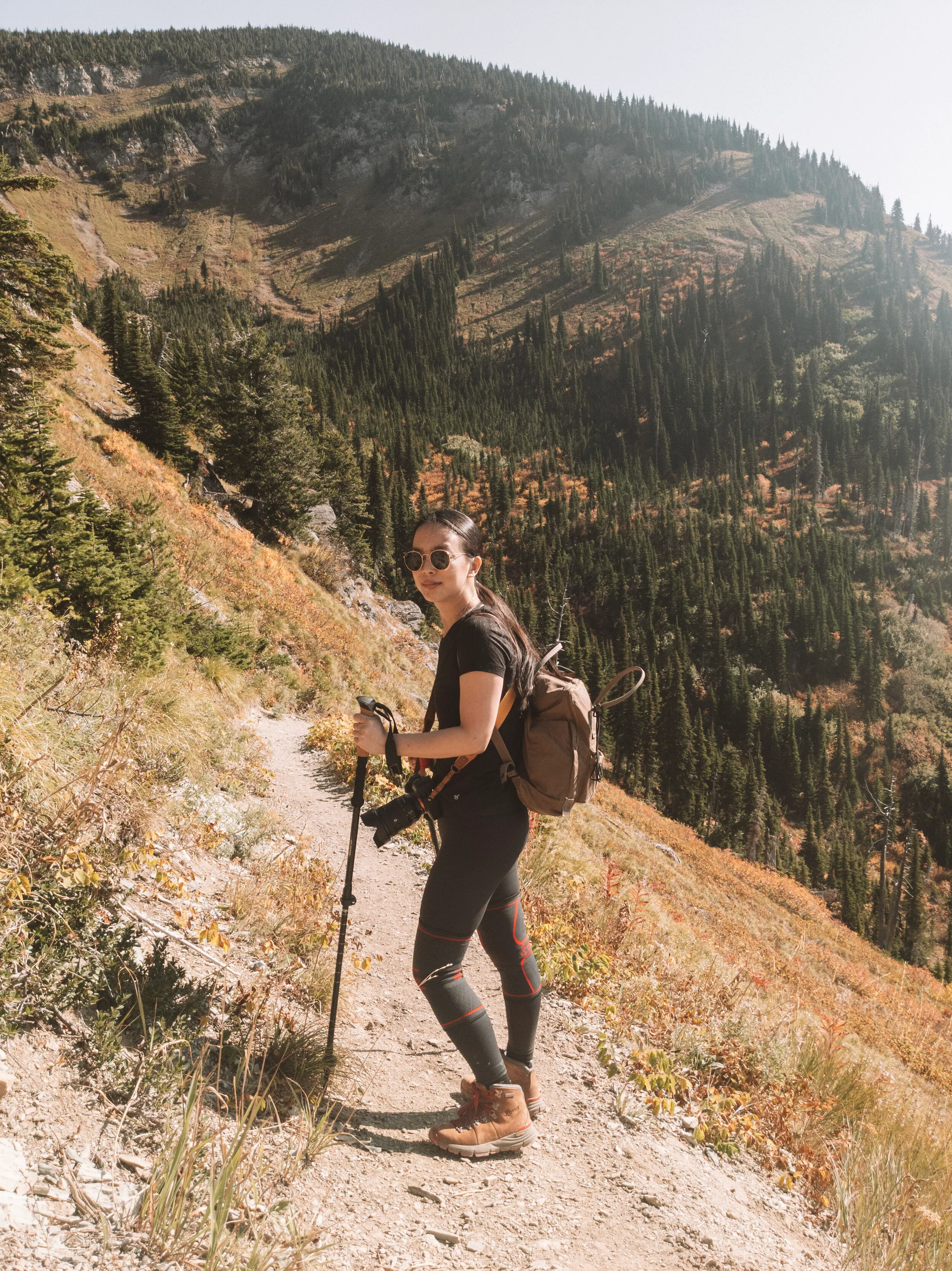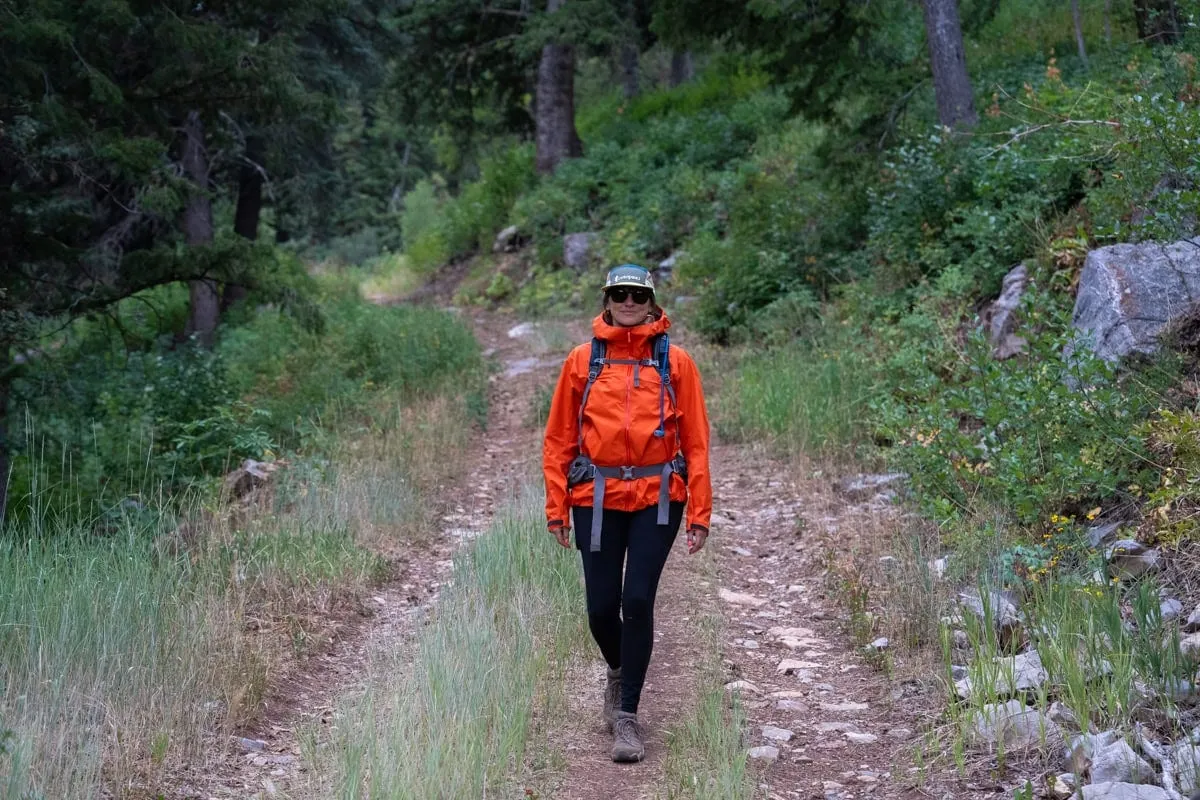
The Complete Guide to What to Wear Hiking: Expert Tips for Every Season and Condition
Wondering what to wear hiking? After thousands of miles on the trail, I've learned that choosing the right hiking clothes can make or break your outdoor adventure. From layering principles to seasonal considerations, this comprehensive guide covers everything you need to know about hiking apparel for maximum comfort, safety, and enjoyment on the trail.
The Science of Layering for Hiking

When it comes to understanding what to wear hiking, mastering the art of layering is absolutely fundamental. During my years of hiking experience, from desert canyons to alpine peaks, I've learned that proper layering can mean the difference between a comfortable adventure and a miserable ordeal. The layering system works by creating insulating air pockets while allowing moisture management and temperature regulation.
The three-layer system forms the foundation of what to wear hiking in any condition. Your base layer sits against your skin and should excel at moisture-wicking. I always recommend synthetic materials like polyester or merino wool for this crucial layer. During a recent hike in the White Mountains, my merino wool base layer kept me comfortable despite dramatic temperature changes from dawn to midday.
Base Layer Essentials
Your base layer is the foundation of what to wear hiking. It should fit snugly without being restrictive and excel at moving moisture away from your skin. I personally prefer long-sleeve base layers for sun protection and versatility, especially when hiking in exposed terrain.
The mid-layer provides insulation and warmth. Fleece jackets, synthetic insulation, or down pieces work excellently here. When deciding what to wear hiking in cooler conditions, I often pack both a lightweight fleece and a packable down jacket. This gives me options as conditions change throughout the day. Your choice of mid-layer significantly impacts your comfort and should align with expected temperatures and activity level.
Perfect moisture-wicking base layer with sun protection
Your outer layer or shell protects against wind, rain, and snow. This is where investing in quality makes a real difference in what to wear hiking safely. I learned this lesson during a sudden thunderstorm in the Rockies when my cheap rain jacket failed completely. A good shell should be waterproof, breathable, and durable enough to handle bushwhacking and rock contact.
Understanding when to add or remove layers becomes intuitive with experience. I typically start hikes feeling slightly cool, knowing I'll warm up quickly once moving. The key principle of what to wear hiking is maintaining the ability to regulate your temperature efficiently. Pack extra layers rather than wearing them all initially, especially during strenuous ascents where you'll generate significant body heat.
Choosing the Right Hiking Fabrics
Fabric selection is crucial when determining what to wear hiking. The material against your skin directly impacts comfort, safety, and performance on the trail. Through years of testing different fabrics in various conditions, I've developed strong preferences based on real-world performance rather than marketing claims.
Recommended Fabrics
- Merino Wool: Natural odor resistance, temperature regulation
- Polyester: Excellent moisture-wicking, quick-drying
- Nylon: Durable, lightweight, versatile
- Synthetic Blends: Combines benefits of multiple materials
Avoid These Fabrics
- Cotton: Retains moisture, loses insulation when wet
- Denim: Heavy, slow-drying, restrictive
- Basic Fleece: Can retain odors, pill easily
- Heavy Materials: Cause overheating, reduce mobility
Merino wool deserves special mention when discussing what to wear hiking. This natural fiber offers incredible temperature regulation, staying cool in summer and warm in winter. I can wear the same merino wool shirt for multiple days without developing odors, making it ideal for multi-day hiking adventures. However, merino wool requires more care and comes at a higher price point than synthetic alternatives.
Synthetic fabrics like polyester and nylon form the backbone of modern hiking apparel. These materials excel at moisture management, dry quickly, and maintain their properties wash after wash. When considering what to wear hiking on a budget, high-quality synthetic fabrics offer excellent performance at more accessible price points. I've found that synthetic materials perform particularly well in high-output activities where you're generating significant sweat.
The cotton debate in hiking circles is settled science - avoid cotton for what to wear hiking in anything beyond perfect conditions. Cotton absorbs moisture and loses virtually all insulating properties when wet. I learned this lesson early in my hiking journey during a cool morning that turned warm, then rainy. My cotton t-shirt became a liability rather than protection, teaching me the importance of proper fabric selection.
Essential Hiking Clothing Items
Building a versatile wardrobe for what to wear hiking requires focusing on key pieces that perform across multiple conditions. Rather than buying everything at once, I recommend building your hiking wardrobe gradually, starting with the most essential items and adding specialized pieces as your hiking ambitions grow.
Hiking Tops and Shirts
Your choice of hiking tops significantly impacts comfort and safety. I always recommend starting with moisture-wicking shirts that offer sun protection. Long-sleeve options provide versatility for changing conditions and protection from sun, bugs, and brush. When deciding what to wear hiking in sunny conditions, UPF-rated shirts offer measurable protection against harmful UV rays.
Tank tops and sleeveless shirts pose challenges when wearing a backpack, as straps can cause chafing and discomfort over long distances. I learned this during a week-long trek where insufficient upper body coverage led to painful rubbing from pack straps. Consider how your hiking backpack will interact with your clothing choices.
Hiking Pants and Bottoms

Hiking pants should balance durability, flexibility, and comfort. When considering what to wear hiking for your lower body, think about the terrain you'll encounter. Technical hiking pants with articulated knees and gusseted crotches provide unrestricted movement for scrambling and high-stepping. I prefer pants with multiple pockets for easy access to essentials like snacks, maps, and tools.
Convertible pants that zip off into shorts offer versatility for changing conditions. During a recent hike in the Sierra Nevada, temperatures varied 40 degrees from morning to afternoon. Having the option to convert to shorts mid-hike proved invaluable for comfort and preventing overheating. This adaptability is key when planning what to wear hiking in variable conditions.
Hiking Shorts and Summer Options
Shorts offer excellent mobility and cooling for warm weather hiking. When deciding what to wear hiking in summer, consider the trade-offs between cooling and protection. Exposed legs face increased risk from sun exposure, scratches, insect bites, and contact with irritating plants. I typically reserve shorts for well-maintained trails in hot conditions where these risks are minimized.
Running shorts work well for hiking, especially those with built-in liners that prevent chafing. The lightweight materials and athletic cut provide comfort during high-output activities. For more technical terrain or longer distances, dedicated hiking shorts with more durable fabrics offer better longevity and often include features like reinforced seat panels and secure pockets.
Seasonal Hiking Clothing Guide
Understanding what to wear hiking changes dramatically with the seasons. Each season presents unique challenges and opportunities that require different approaches to clothing selection. My seasonal clothing strategies have evolved through experience in diverse climates and conditions, from scorching desert summers to frigid mountain winters.
Summer Hiking Clothing
Summer demands maximum cooling and sun protection. Lightweight, light-colored clothing with UPF ratings helps prevent overheating and sunburn. I always pack extra water and electrolytes when summer hiking requires minimal clothing layers.
- Moisture-wicking shirts with UPF protection
- Lightweight hiking shorts or convertible pants
- Wide-brimmed sun hat and sunglasses
- Breathable hiking shoes or trail runners
Winter Hiking Clothing
Winter hiking requires sophisticated layering and insulation. Managing moisture becomes critical as wet clothing in cold conditions creates serious hypothermia risk. I always pack backup layers and emergency shelter for winter conditions.
- Insulating base layers (merino wool or synthetic)
- Insulated mid-layers and down jackets
- Waterproof, breathable outer shells
- Insulated, waterproof hiking boots
Spring Hiking Clothing
Spring conditions change rapidly, requiring versatile layering options. Mud season demands waterproof footwear and clothing that handles wet conditions. I always check trail conditions before spring hikes as snow and ice may persist at higher elevations.
- Layerable system for temperature swings
- Waterproof rain gear and pants
- Gaiters for mud and debris protection
- Traction devices for icy conditions
Fall Hiking Clothing
Fall hiking offers spectacular scenery but requires preparation for cooling temperatures and potential early winter weather. Daylight hours shorten significantly, making headlamps essential even for day hikes that might extend past sunset.
- Warm layers for cold mornings and evenings
- Rain protection for increased precipitation
- Insulation that packs small but performs well
- Emergency gear for shorter daylight hours
Elevation changes create additional seasonal complexity when planning what to wear hiking. I've experienced snow at 10,000 feet in July and t-shirt weather at 5,000 feet in December. Always research the specific elevation and microclimate of your hiking destination. Mountain weather can change rapidly regardless of season, making layering and emergency preparedness essential year-round.
Transitional seasons like spring and fall present the greatest clothing challenges. During a recent October hike in the Cascades, I encountered frost at dawn, pleasant hiking temperatures by noon, and rain by late afternoon. Having the right combination of layers allowed me to stay comfortable throughout these dramatic changes. This experience reinforced the importance of checking detailed weather forecasts and packing conservatively for what to wear hiking during shoulder seasons.
Footwear and Accessories
Footwear choices often determine the success or failure of a hiking experience more than any other single gear decision. When considering what to wear hiking, your feet deserve the most careful attention and investment. Poor footwear leads to blisters, injuries, and miserable experiences that can end trips prematurely and create lasting negative associations with hiking.
Hiking Boots vs. Trail Runners
The debate between hiking boots and trail runners reflects changing approaches to what to wear hiking on your feet. Traditional leather hiking boots offer ankle support, durability, and protection from rocks and debris. However, they're heavier, less breathable, and require break-in periods. I still reach for boots when carrying heavy loads, hiking off-trail, or tackling technical terrain where ankle protection matters most.
Trail running shoes have revolutionized hiking footwear for many situations. They're lighter, more comfortable immediately, and offer excellent traction on most terrain. The reduced weight means less fatigue over long distances, and the athletic fit provides precision on technical ground. For detailed guidance on this important decision, check out our comprehensive comparison of hiking shoes vs boots.
Reliable waterproof hiking boots with excellent traction and support
Hiking Socks and Foot Care
Quality hiking socks are as important as the shoes themselves when determining what to wear hiking on your feet. Wool and synthetic blend socks provide moisture management, cushioning, and blister prevention. I've found that investing in premium socks pays dividends in comfort and foot health over thousands of trail miles.
Sock height should exceed your footwear to prevent chafing where shoe meets skin. Cushioning in heel and forefoot areas provides comfort on rocky terrain, while reinforced construction in high-wear areas extends sock life. During multi-day trips, I always pack extra socks as keeping feet dry and clean prevents most hiking foot problems.
Essential Hiking Accessories
Accessories complete your hiking outfit and provide crucial protection and convenience. Sun hats with wide brims protect your face, neck, and ears from harmful UV exposure. I prefer hats with chin straps that prevent loss in windy conditions, which are common on exposed ridges and peaks. Quality sunglasses with UV protection and impact resistance are non-negotiable for eye safety.
Gloves serve multiple purposes beyond warmth, protecting hands during scrambling and when handling gear. Lightweight liner gloves work well for three-season hiking, while insulated options become essential for cold conditions. A good day hiking pack keeps all these accessories organized and easily accessible.
Safety and Weather Protection

Safety considerations should drive every decision about what to wear hiking. The mountains don't care about fashion or budget constraints – they demand respect and preparation. I've seen too many hikers underestimate weather changes and find themselves in dangerous situations because they prioritized comfort over safety or failed to pack adequate protection.
Weather Protection Systems
Effective weather protection goes beyond carrying a rain jacket. Understanding weather patterns, monitoring forecasts, and preparing for worst-case scenarios should influence every choice about what to wear hiking. I always check multiple weather sources and plan for conditions worse than predicted, especially when venturing into alpine environments where weather changes rapidly.
Rain gear serves multiple protective functions beyond keeping you dry. Quality rain jackets provide wind protection, which becomes critical for preventing hypothermia in cool, windy conditions. During a memorable hike in Glacier National Park, unexpected hail and strong winds made my rain jacket essential for safety, not just comfort. The ability to quickly don weather protection can prevent emergency situations from developing.
Packable emergency rain protection for unexpected weather
Visibility and Emergency Considerations
Bright colors aid visibility for safety and emergency situations. While earth tones might seem more appropriate for nature, bright clothing helps search and rescue teams locate lost hikers. I incorporate high-visibility elements into my hiking wardrobe without sacrificing functionality or comfort. Orange, yellow, and bright red items serve dual purposes of style and safety.
Emergency preparedness should influence what to wear hiking beyond the immediate forecast. I always pack an emergency bivy or space blanket, regardless of trip length or season. These lightweight items provide crucial warmth if you're forced to spend an unexpected night outdoors due to injury, weather, or navigation errors. Proper preparation prevents minor problems from becoming life-threatening emergencies.
Sun Protection Strategies
Sun protection requires a comprehensive approach that goes beyond sunscreen. When planning what to wear hiking in sunny conditions, consider that UV exposure increases significantly with elevation. At 10,000 feet, UV intensity is 25% higher than at sea level, making protective clothing essential for preventing sunburn and long-term skin damage.
Long-sleeve shirts with UPF ratings provide measurable sun protection that doesn't wear off like sunscreen. I prefer lightweight, breathable fabrics that cover exposed skin without causing overheating. Combining protective clothing with broad-spectrum sunscreen, sunglasses, and wide-brimmed hats creates comprehensive protection against harmful UV radiation during outdoor activities.
Conclusion
Mastering what to wear hiking requires balancing multiple factors: comfort, safety, weather protection, and personal preferences. Through years of trail experience, I've learned that the best hiking clothes are those you don't notice – they keep you comfortable, dry, and protected without drawing attention to themselves through poor performance or discomfort.
Start with quality basics and build your hiking wardrobe gradually based on your specific needs and hiking goals. A moisture-wicking base layer, durable hiking pants, waterproof rain jacket, and proper footwear form the foundation of any hiking wardrobe. From there, add specialized items like insulation layers, sun protection, and technical accessories as your hiking adventures expand.
Remember that what to wear hiking isn't just about the clothes themselves – it's about understanding how clothing interacts with weather, terrain, and your body's needs. Pay attention to how different fabrics and fits perform in various conditions. Take notes on what works and what doesn't, building a personal database of clothing knowledge that will serve you well on future adventures.
Ready to Plan Your Next Adventure?
Now that you understand what to wear hiking, you're ready to explore with confidence. Whether you're planning your first day hike or preparing for a multi-day backpacking expedition, proper clothing choices will enhance your safety and enjoyment on the trail.
For more comprehensive guides on outdoor adventures and gear recommendations, visit our complete hiking resources to continue building your outdoor knowledge and skills.
The key to successful hiking lies in preparation, and proper clothing forms a crucial part of that preparation. With the knowledge from this guide about what to wear hiking, you're equipped to make informed decisions that will keep you comfortable and safe on the trail. Remember that the best hiking clothes are those that allow you to focus on the beauty around you rather than discomfort or safety concerns.
Every hike is an opportunity to refine your clothing system and learn more about what works best for your body and hiking style. Embrace the process of building your hiking wardrobe and developing your personal approach to what to wear hiking. The trails are waiting, and with proper preparation, your next adventure will be your best yet.

